Beer Brewing in Early Geneva
By Anne Dealy, Director of Education and Public Information
“Ale, proper drink for Americans.”
Motto of New York City brewers at 1788 parade celebrating the ratification of the U.S. Constitution.
At our recent Annual Dinner we enjoyed Jane Oakes’ talk about the history of hops growing and beer production in the area around Rochester and the Finger Lakes. She pointed out that the history of brewing in this area of New York goes back to the early 1800s. Today’s explosion of microbreweries is just the latest phase in the story of beer.
Beer has a long history in the Americas. Indigenous people in some areas brewed fermented drinks from corn, and the Spanish brought the beverage to their colonies in the 16th century. Virginia colonists used corn to brew ale by 1587. The Dutch in New Netherland opened the New World’s first brewery in 1613. The English separatists, off course and bound for Virginia, were let out at Plymouth when the Mayflower began to run short of supplies, especially beer. Beer was an essential commodity on shipboard. Unlike water, it remained drinkable for the long voyage. Spruce beer was part of the Revolutionary War soldier’s rations. By 1789, George Washington refused to buy his favorite imported porter in order to “buy American.”
Along with cider, beer was an everyday drink, consumed by everyone: men, women and children. People were suspicious of drinking water because they knew it caused illness, especially in urban areas, so they favored alcoholic drinks. A lot of beer had low alcohol content, but people drank it throughout the day. They brewed their own beer at home, using barley, sarsaparilla, spruce, corn or even pea shells!
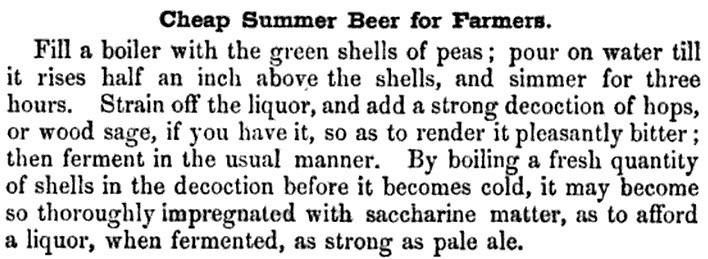
Farmer’s manuals and advice books had recipes for many substitutes for barley in making fermented beverages. Spruce and birch barks were more common than peas!
Despite beer’s early place in American history, it was not the preferred American drink. Rum was the favorite in the colonial period, replaced by corn whiskey after the Revolution. By the 1830s, Americans were consuming 7.1 gallons of alcoholic beverages per capita, most of it liquor. This compares to 2.34 gallons today. Not coincidentally, the temperance movement took off around this time. Early temperance advocates encouraged Americans to drink beer rather than whiskey because they considered it nutritious and not as alcoholic.
Quality barley was the essential ingredient for European-style beers and it was a major crop in this region in the mid-1800s. New York state produced 69% of the U.S. crop in 1850, but that dropped to 26% just 10 years later. This resulted from new diseases that were more prevalent in a humid climate, increased competition from western growers, and the temperance movement. Lower quality barley was fit only for animal feed. Temperance-minded John Johnston thought it was excellent for this, preferable to “raising grain, to be made in a drink to stupify [sic] a portion of the community.”
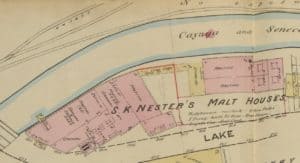
Nester’s was between the canal and the lake. The spot was home to several malthouses before Nester purchased the land in 1870.
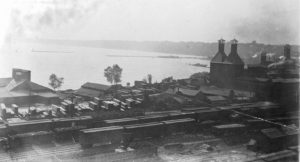
Nester’s Malthouse is the building with the towers on the right. Geneva’s water and rail connections made it a natural location for agricultural businesses like malting.
Of course many farmers did not feel this way. They sold barley to maltsters in Geneva and around the Finger Lakes, and malting became big business. Malting is the process of germinating the barley by steeping the grain heads in water. Drying grain with hot air stops the germination. This process converts the starch into sugar for fermenting. Several businesses engaged in malting in late 19th-century Geneva. Samuel Nester’s malthouse on Lake Road opened in 1870 and remained in operation until 1910. It sold malt primarily to brewers in New York, Boston and Philadelphia. Just before Nester’s death in 1908, the malthouse had the capacity to process 650,000 bushels of barley per year.
Geneva had its own brewery very early on, and you can visit a recreation of it at Genesee Country Village and Museum. Walter Grieve, a founder of the Village of Geneva, owned it. He had worked for Charles Williamson, which may be how he ended up in Geneva. Scottish nobleman Thomas Douglas described the brewery in 1803, while traveling through the state. Douglas’s detailed description of the place, allowed the museum to recreate at frontier brewery. Geneva newspapers do not mention the brewery, although Grieve comes up several times before his death in 1835. Perhaps the brewery did not last long, given the ease of brewing at home and the village’s small population (325 in 1805).
Evidence for breweries after Grieve is scant. According to the census, by 1840 there were only 3 breweries in all of Ontario County. Geneva newspapers have very few advertisements or news for local breweries over the 1800s. Perhaps they were too well known to need publicizing. People may also have brewed their own beer or purchased from a neighbor. In historical references, the newspaper editor mentions Ryan brewery on the south end of Exchange Street at mid century, near where Washington Street came down to Seneca Lake. Mothers sent their children there to buy yeast for making bread.
In 1864, the Geneva Gazette announced the welcome arrival of James Alexander from Oswego, who had purchased the Clinton Hotel and buildings on Lake Street he intended to remodel into a brewery. The brewery opened in March of 1865, brewing “Family Ales and Porter.” The Gazette praised it for allowing Genevans to purchase their beer locally and build up the village economy. Alexander continued the business until 1873 when he sold the brewery “to a party from New York City.” Occasionally the newspaper mentioned the establishment of a new brewery, but none seemed to have long-term success.
Larger breweries began to replace small operations in cities across the country. Bottled beer advertisements from several regional breweries appeared in the local papers. Edgar Parker, the editor of the Geneva Advertiser and Gazette and a local booster, regularly repeated rumors that a serious bottling business was coming to Geneva. The stories finally came true with the establishment of the Geneva Brewing Company on Border City Road just outside the city in 1908.
Geneva Brewing Company was a large business owned by stock holders from outside Geneva and managed by men from Buffalo. The company expanded to include an ice business in 1909. Most of the business was destroyed by a fire in 1914, and one of the managers was charged with arson. The jury acquitted the man, but insurance company denied the owners’ claim, and the business went bankrupt. The remaining equipment was disbursed at auction. That was the ignoble end of brewing businesses in Geneva before prohibition outlawed beer in 1920.
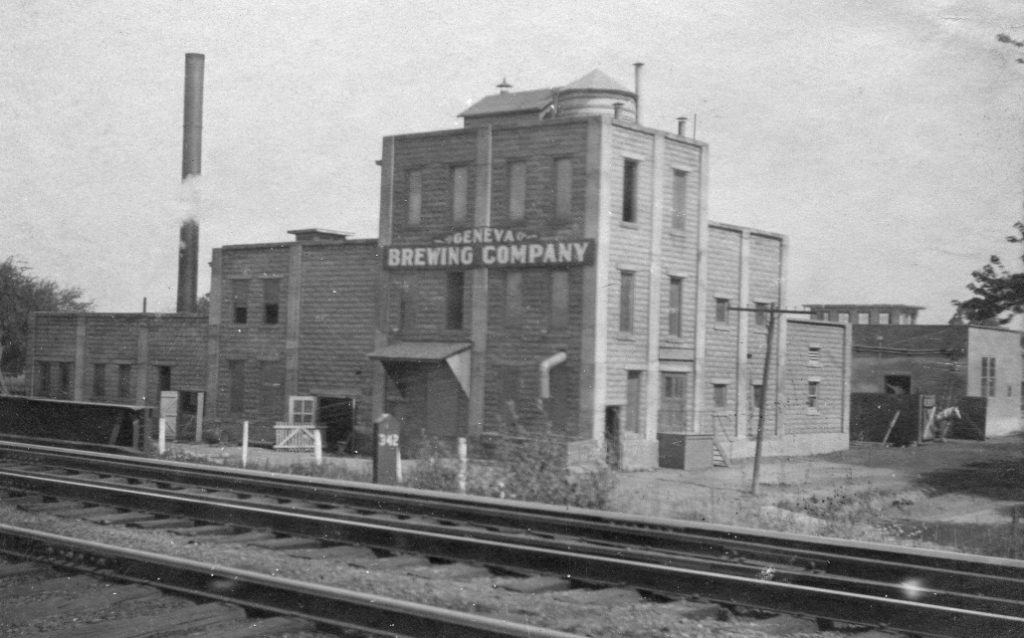
The Geneva Brewing Company was on Border City Road, just outside the city. It caught fire in 1914 and was not rebuilt.
If you want to celebrate the modern resurgence of local brewing, join us at Blues, Brews and BBQ at Rose Hill Mansion on Saturday, June 22, 2019 from 4 to 8 p.m.

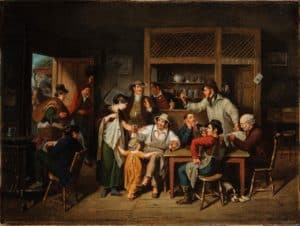
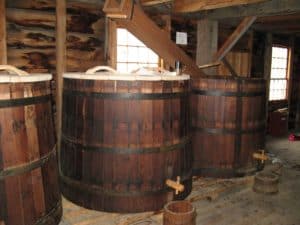
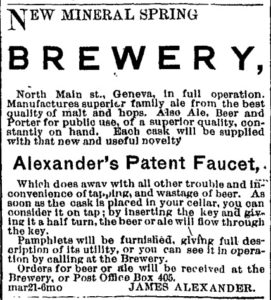

My grandfather S. K. Nesster (not Nestor) was active with brewing in Geneva. Please mail me the catalog of your exhibit. Rosalind Heid
Rosalind Heid
[address removed for privacy]
Mrs. Heid,
Thank you for your comment. I have corrected the spelling error in the post. We don’t currently have an exhibit on brewing or malthouses. This post was inspired by a fundraising event we had this past Saturday. I hope you enjoyed it.
Anne